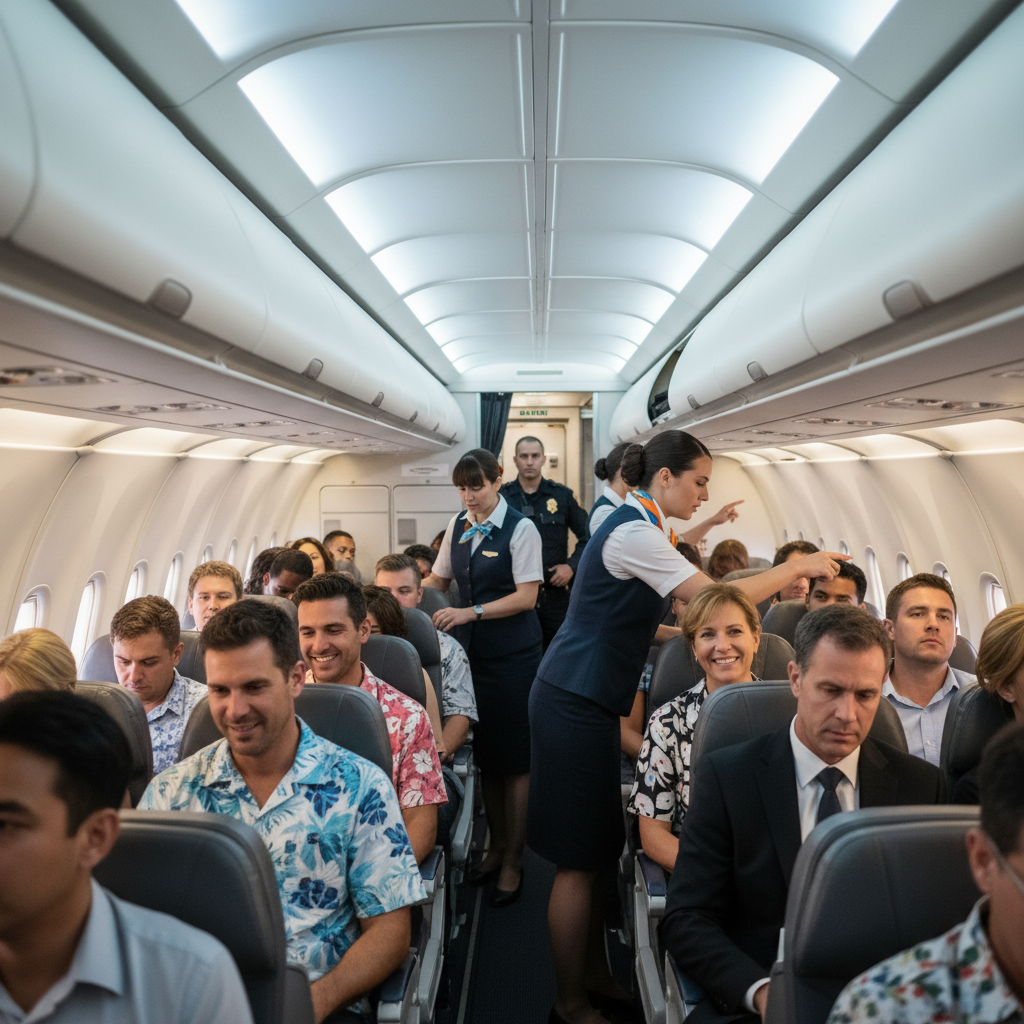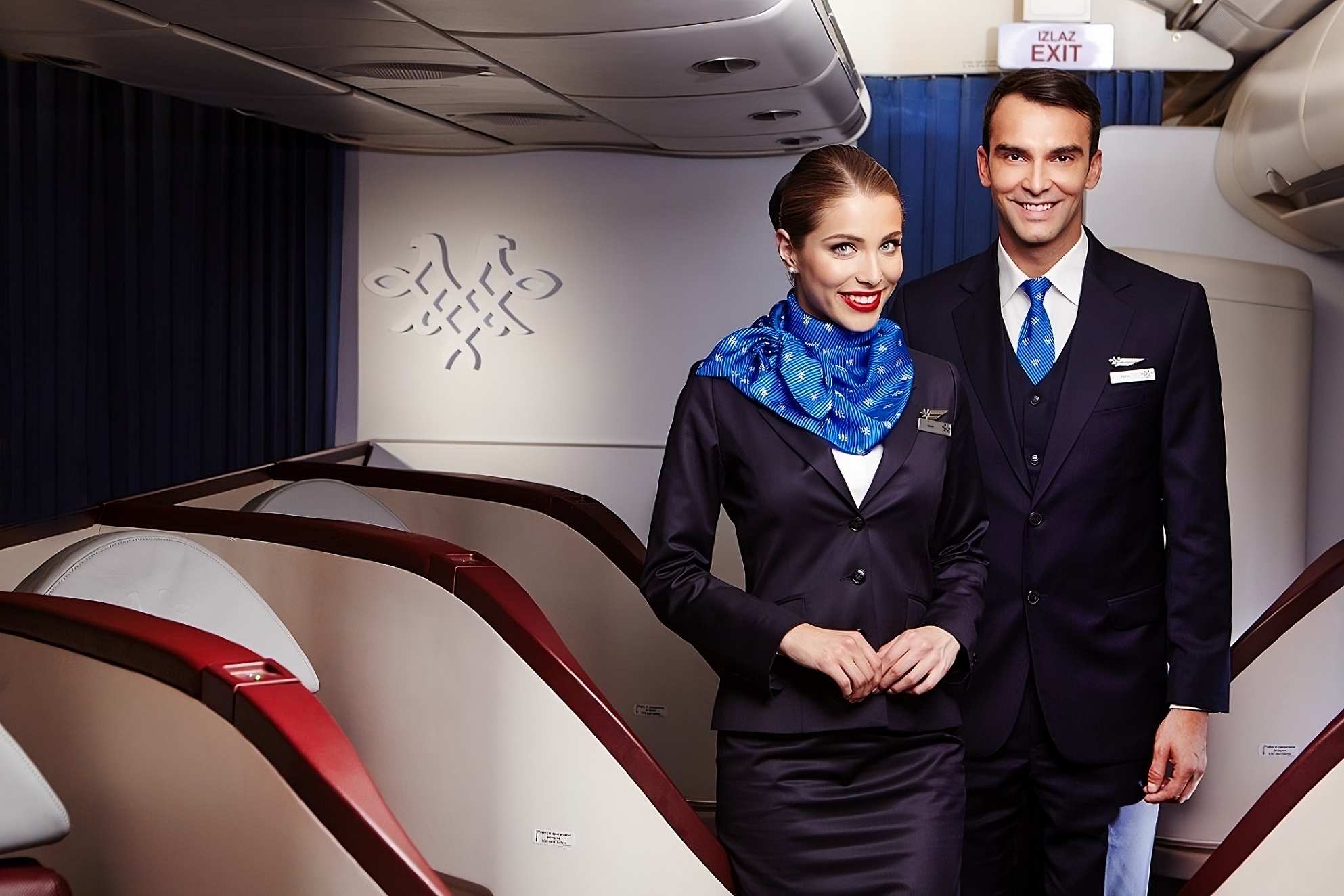
Managing Air Rage: Challenges and Factors Behind Unruly Airline Passengers
Managing unruly passengers presents significant challenges for flight attendants, especially on routes to popular leisure destinations and major business hubs. Passenger misconduct ranges from non-compliance and entitlement to intoxication and verbal or physical altercations. Key factors influencing disruptive behavior include "vacation mode" attitudes at busy vacation spots, demanding business travelers, and peak travel seasons that intensify frustration due to crowded cabins. Alcohol consumption is a critical driver of air rage, often leading to defiance and aggression, making enforcement of related policies crucial yet challenging. Environmental stresses, such as cramped spaces and poor communication about delays, further exacerbate tensions. Enhancing passenger cooperation through clear communication, strict alcohol management, visible security presence, and adaptable crew training is essential to maintaining safety and mitigating air rage onboard.
Summary
Managing Unruly Passengers: Challenges and Factors Influencing Air Rage
Flight attendants and airline staff regularly encounter challenges posed by unruly passengers, particularly on routes serving leisure travelers and major business airports. Passenger misconduct on flights ranges widely – from entitlement and non-compliance to intoxication, verbal abuse, and sometimes physical altercations. Understanding the underlying factors that contribute to such disruptive behavior is essential for effective airline security and safety protocol enforcement.
Passenger Behavior Hotspots and Travel Season Effects
Certain geographic regions and airports are repeatedly identified as hotspots for difficult passenger behavior. Busy vacation destinations attract leisure travelers whose “vacation mode” attitudes can lead to relaxed adherence to rules, fostering non-compliance and entitlement behaviors. Similarly, busy business hubs present their own challenges; business travelers often exhibit demanding attitudes requiring different management styles. During peak travel seasons, these tendencies tend to intensify, with crowded cabins and limited personal space exacerbating passenger frustration and increasing instances of misconduct.
The Role of Alcohol and Intoxication
Alcohol consumption onboard is a critical factor linked to air rage and passenger misconduct. Intoxication is frequently the driver behind verbal abuse, physical altercations, and defiance of crew instructions. Managing alcohol intake and enforcing related policies remain vital strategies for minimizing disruptions. However, enforcement becomes more challenging when passengers are non-compliant with boarding procedures, seatbelt fastening, and baggage storage protocols, further straining crew efforts.
Environmental and Security Considerations
Crowded aircraft cabins and poor communication about delays or flight changes contribute to heightened stress and passenger frustration. These environmental factors interplay with passenger behavior to create volatile situations. Additionally, flight attendants have observed security vulnerabilities during boarding and in-flight phases, including disruptive and suspicious conduct that demands attention from airline security and ground personnel. Ensuring visible law enforcement presence and clear communication of safety protocols can reduce risks and improve passenger cooperation.
Conclusion
The complexity of managing passenger behavior onboard reflects a combination of entitlement, intoxication, and compliance challenges that are especially pronounced on routes serving popular leisure destinations and congested business airports. Addressing these issues requires coordinated strategies emphasizing alcohol management, clear communication, security oversight, and adaptable crew training. Enhancing passenger cooperation and maintaining a safe aircraft cabin environment are fundamental to mitigating air rage and ensuring smooth travel experiences.

Frequently Asked Questions
Q: Routes flight attendants hate working
A: Flight attendants often dislike working on routes that involve long layovers in undesirable locations, unpredictable delays, or difficult passenger demographics. Routes with multiple short hops can be exhausting due to constant takeoffs and landings. Additionally, redeye flights and ultra-long-haul routes without adequate rest periods are generally unpopular because they disrupt sleep patterns and personal time. Ultimately, the most disliked routes vary among individuals based on personal preferences and airline policies.
Q: Why do flight attendants dislike certain passengers
A: Flight attendants may dislike certain passengers due to behaviors that make their job more difficult or compromise safety, such as rudeness, non-compliance with safety instructions, excessive intoxication, or being disruptive. Passengers who create stressful situations, refuse to cooperate, or show disrespect toward staff can hinder the crew's ability to ensure a smooth and safe flight. However, flight attendants are trained to handle all passengers professionally and prioritize safety regardless of personal feelings.
Q: Most troublesome flight routes for cabin crew
A: The most troublesome flight routes for cabin crew often include ultra-long-haul flights, such as those between New York and Singapore or Sydney and Dallas, due to the extended working hours and challenges in managing fatigue. Routes with multiple stopovers or those prone to severe weather conditions, such as flights over the North Atlantic or Himalayan regions, can also be particularly taxing. Additionally, flights to regions with difficult airport logistics, security concerns, or high passenger unrest, such as some Middle Eastern or African routes, add complexity to the cabin crew's duties. Overall, routes demanding continuous alertness and adaptability tend to be the most challenging.
Q: Passenger behavior problems on flights
A: Passenger behavior problems on flights can include disruptions such as excessive noise, refusal to follow crew instructions, intoxication, aggressive or abusive behavior, and non-compliance with safety regulations. These issues can compromise the safety and comfort of other passengers and crew, sometimes leading to flight diversions or legal consequences. Airlines and flight crews are trained to handle such situations by enforcing rules, using de-escalation techniques, and involving authorities if necessary.
Q: Which airports have difficult passengers
A: Airports with difficult passengers are often those with high traffic volumes, long wait times, or frequent delays, such as major hubs like Los Angeles International (LAX), London Heathrow (LHR), and Dubai International (DXB). Factors like security procedures, cultural differences, and flight disruptions can contribute to passenger frustration. However, difficult passenger behavior can occur at any airport depending on circumstances like weather, staffing issues, or holiday travel surges.
Key Entities
New York: New York is the most populous city in the United States and a major hub for finance, culture, and media. It is often referenced in articles discussing urban development, economic trends, and diverse cultural events.
South Florida: South Florida refers to the southeastern region of Florida, including cities like Miami and Fort Lauderdale, known for its tourism and vibrant multicultural population. The area frequently appears in discussions about coastal real estate, hurricane preparedness, and economic growth.
Los Angeles: Los Angeles is a major city in California renowned for its entertainment industry, particularly Hollywood. It also plays a significant role in discussions about urban sprawl, traffic congestion, and cultural diversity.
Calgary: Calgary is a Canadian city in the province of Alberta, known for its oil industry and the annual Calgary Stampede. It is often mentioned in relation to energy sector developments and western Canadian economic trends.
Washington Dulles: Washington Dulles International Airport is a major airport serving the Washington, D.C. metropolitan area and a key gateway for international flights. It is frequently cited in articles about air travel, security measures, and transportation infrastructure improvements.
External articles
- Flight Attendants Reveal The Routes They Hate Working ...
- Disrespect from airline staff towards passengers
- Flight attendants/cabin crew, what is the worst destination ...
Articles in same category
- Luxury Hotel Openings to Watch in 2025: Exclusive Resorts and Historic Charm
- Kristen Bell Stars in Citi Strata Elite Card Ad Campaign Highlighting Exceptional Travel Rewards
- Integrating Nature, Technology, and Wellness in Modern Office Design
YouTube Video
Title: Cabin Crew Deal With Rowdy Passengers
Channel: Our Stories
URL: https://www.youtube.com/watch?v=efn1bGmH1cg
Published: 2 years ago
Travel